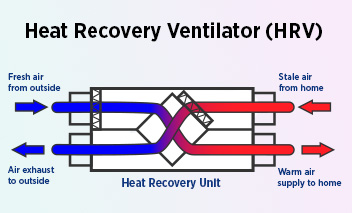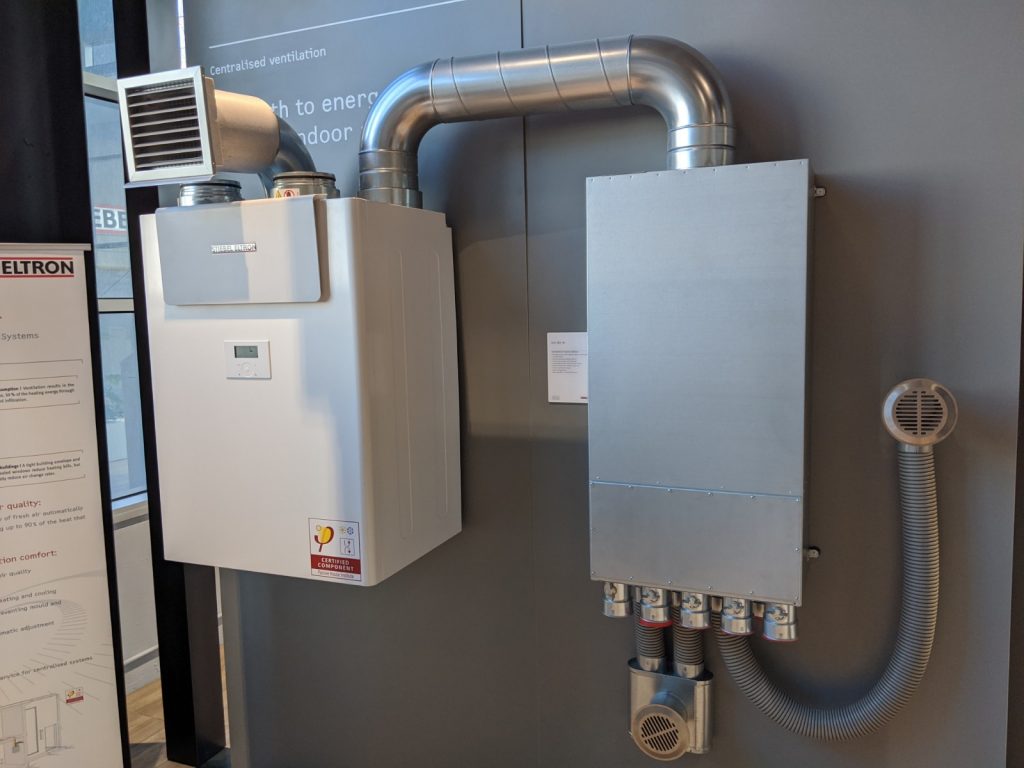The All-Inclusive Overview to the Uses of Heat Recovery Ventilation in Modern Buildings
Heat Recovery Ventilation (HRV) systems stand for a significant development in building technology (HRV Heat Recovery Ventilation). They offer a method for exchanging stale indoor air with fresh outside air while lessening energy loss. This method not just improves indoor air high quality but additionally adds to energy effectiveness in both domestic and industrial buildings. Recognizing the different applications and benefits of HRV can disclose its critical function in contemporary layout and sustainability initiatives. The effects of this modern technology are worth discovering further
Understanding Heat Recovery Ventilation Equipments

Although many contemporary buildings focus on power efficiency, comprehending heat recovery air flow (HRV) systems is essential for maximizing indoor air top quality and decreasing energy usage. HRV systems work by moving heat from stagnant interior air to inbound fresh air, successfully preserving comfortable interior temperatures while lessening energy loss. These systems consist of a warmth exchanger, fans, and ductwork that promote the flow of air. During winter, HRV devices catch and reuse warmth from the outward bound air, while in summertime, they can aid cool down inbound air. By constantly trading air, HRV systems additionally reduce humidity and the concentration of indoor pollutants. Proper setup and maintenance of HRV systems are crucial for their effectiveness and performance in improving general structure performance and convenience.
Advantages of Heat Recovery Ventilation
Heat recovery ventilation systems offer numerous advantages that enhance both power efficiency and interior air high quality in modern-day buildings. By recording and reusing power from exhaust air, these systems significantly decrease home heating and air conditioning expenses, causing lower power consumption. They maintain a stable flow of fresh outside air, reducing the risk of interior air pollutants and allergens. This constant exchange assists regulate humidity degrees, protecting against mold and mildew growth and guaranteeing a much healthier living atmosphere. In addition, HRV systems add to sustainability goals by decreasing general carbon impacts. Their capability to optimize ventilation without compromising thermal convenience makes them a valuable enhancement to contemporary building layout, promoting both economic and eco-friendly benefits.
Applications of HRV in Residential Buildings
As homeowners progressively focus on power efficiency and interior air top quality, the applications of heat recuperation air flow (HRV) systems in residential buildings have come to be extra prevalent. HRV systems are especially beneficial in firmly secured homes, where keeping fresh air blood circulation is important for stopping dampness build-up and indoor pollutants. They successfully move heat from outbound stagnant air to incoming fresh air, reducing power expenses connected with heating and air conditioning. In addition, HRVs can enhance comfort levels by controling moisture and temperature level. websites They are also versatile for various domestic layouts, consisting of single-family homes and multi-unit buildings. Overall, integrating HRV systems supports sustainable living techniques while ensuring a healthier indoor atmosphere for owners.
HRV in Commercial and Industrial Setups
In industrial and industrial settings, the implementation of warmth recuperation air flow (HRV) systems has become progressively crucial for enhancing energy effectiveness and keeping air high quality. These systems efficiently move heat web link from exhaust air to inbound fresh air, decreasing the need for extra home heating or cooling. This not only reduces power costs but also adds to sustainability campaigns. Industries such as production, warehousing, and office buildings profit considerably from HRV systems, as they assist regulate temperature level and humidity levels, ensuring a comfy and efficient environment. In addition, HRV systems aid in removing impurities and excess wetness, boosting indoor air quality. As guidelines around air top quality end up being stricter, the adoption of HRV innovation is likely to expand, making it an essential component of modern-day commercial and commercial infrastructure.
Future Patterns in Heat Recovery Ventilation Modern Technology

Often Asked Inquiries
Just How Does Heat Recovery Ventilation Influence Indoor Air Top Quality?
Heat recovery ventilation greatly improves indoor air high quality by constantly trading stale interior air with fresh exterior air while recuperating power. This procedure reduces contaminants, keeps suitable moisture levels, and ensures a much healthier setting for residents.
Can HRV Solutions Be Set Up in Existing Structures?
HRV systems can undoubtedly be set up in existing structures. Retrofitting might need modifications to ductwork and air flow layouts, but it considerably boosts energy efficiency and interior air high quality, making it a viable alternative for older structures.
What Maintenance Is Required for HRV Solutions?

Exist Particular Climates Where HRV Is More Reliable?
Heat recovery ventilation systems are particularly reliable in environments with significant temperature distinctions between periods. These systems enhance energy efficiency by recuperating warm from exhaust air, making them perfect for both cold and reasonably cozy atmospheres.
Exactly How Do HRV Systems Affect Power Expenses?
